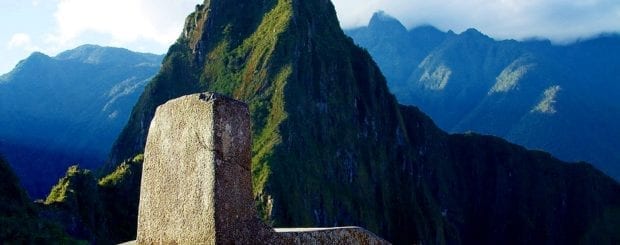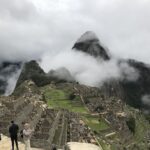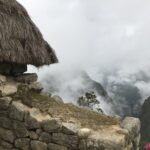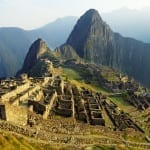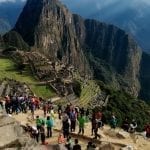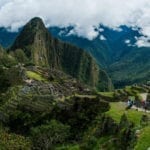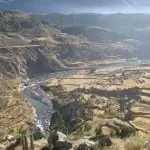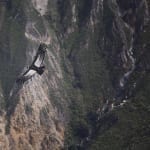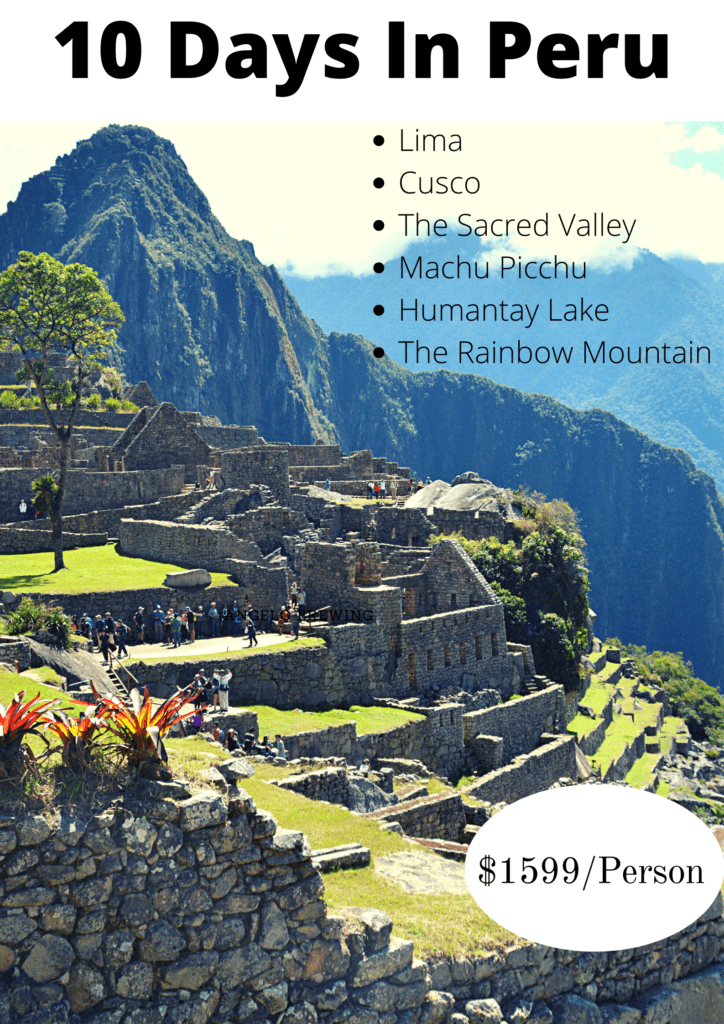Intihuatana: The Sundial in Machu Picchu
James Bustamante is Native to New York but born to Peruvian parents. He has been traveling throughout Latin America since early 2003 and finally made his home in Peru. James has made his way by eating and traveling through almost every country in Central and South America.
Last Updated on March 25, 2024 by James Bustamante
The Intihuatana, or Sundial in Machu Picchu, is one of the major attractions in the city of Inca.
Machu Picchu is considered one of the dream destinations by the thousands of tourists it receives each year. Sometimes, travelers might be overwhelmed with all there is to see in the complex.
Intihuatana is one of the more important areas to see over the Machu Picchu hike. Let’s go over the details of the intihuatana or Machu Picchu Sundial.
Intihuatana is also known as the sundial in Machu Picchu. This structure is carved into stone and was used during the times of the Inca as a calendar.
What Exactly is Intihuatana?

What Intihuatana looks like physically would be a polygon shaped is a lithic piece or a sundial. Each side of this monument casts shadows in relation to the location of the Earth to the sun, this also takes into account the different seasons throughout the year.
Intihuatana has a few stairs, which were used by a priest when conducting religious ceremonies. There is also a table, carved from stone, of course. This is said to have been used for offerings during the rituals.
Intihuatana in Machu Picchu was apparently created for several reasons. The major idea behind It was to observe the movements of the sun precisely.
Such observations of the sun included the “movement” of the sun, weather changes, and the different seasons.
The Name Intihuatana
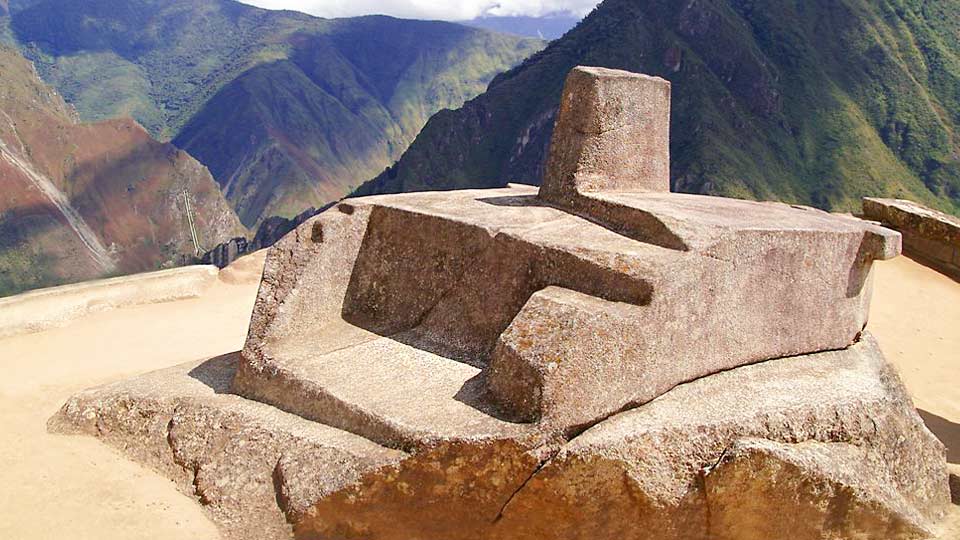
The name Intihuatana is a word in the Inca language, also known as the Quechua language. The word for the monument consists of two of these Quechua words.
If we break it down, “Inti” is the word for the Sun, and “watana” means to tie up, hold or grab. This is a direct reference to what the Machu Picchu Sundial was used for, basically to use the Sun as a guide for the weather and the change in seasons.
The Inca used these set times of the year to perform their sacred rituals. During the Machu Picchu tour, this is one of the first points the guide will touch up on.
Description of Intihuatana
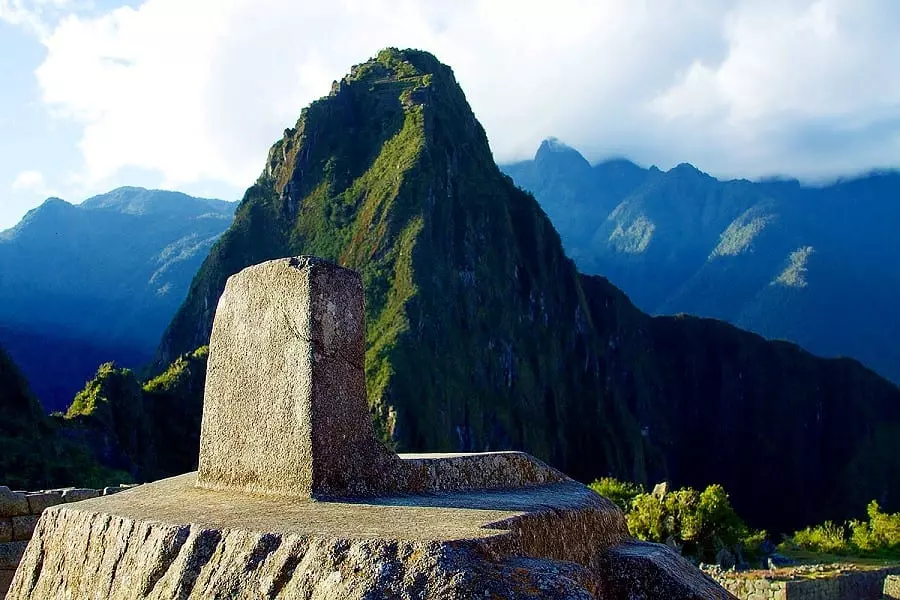
The Intihuatana Sundial in Machu Picchu is a monolithic construction set on about three different levels. The upper portion of Intihuatana is a cylinder shape where the sun’s rays reach to make the Sundial.
This cylinder has four walls facing different cardinal points: North, South, East, and West.
Since Intihuatana receives the sun’s rays directly, this monolith is believed to radiate a type of energy locally. Again, this sacred Sundial was used for religious ceremonies, so there might be something to the local claim.
Part of the sundial’s attraction is having visitors get their hands close to it to see if they can feel this energy emanating from the Sundial.
Previously tourists were allowed to place their hands directly onto the Inca monolith, this practice however was discontinued due to the high volume of incoming travelers.
Uses For Intihuatana in Machu Picchu

Intihuatana is said to have been used by the Inca mainly for religious offerings and other local rituals. One of the most valuable uses for the structure was as a calendar that marked the different agricultural seasons.
The Inca used the Machu Picchu sundial to pinpoint the correct times of the year to plant and harvest their crops. All this was planned according to the shadow cast on the sundial from the sun’s rays throughout the year.
To the native Incas, the Sun (Inti) was considered one of their most vital deities and the ruler of all the Incas. To the Inca, the monolith was a sacred tool with messages coming directly from the Incas’ mighty god.
Finding Intihuatana in Machu Picchu
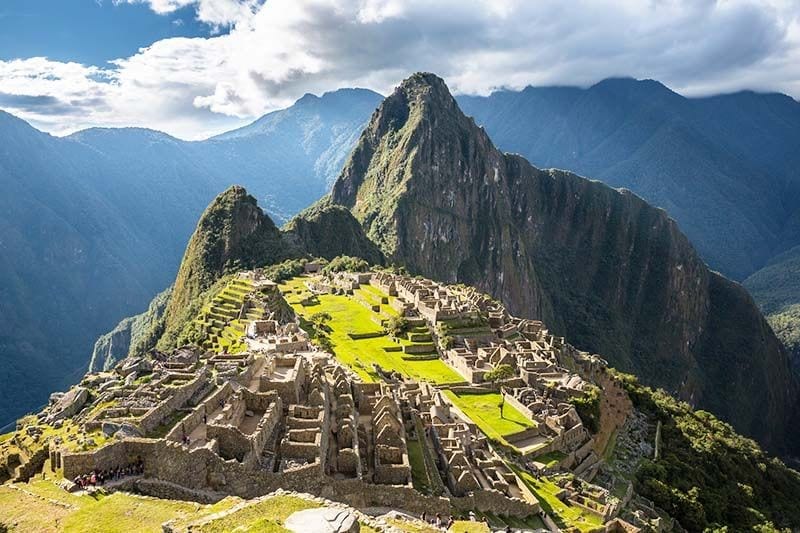
If you are looking for Intihuatana and are not in one of our guided Peru tour package groups, look no further. The Machu Picchu sundial can be found in the Hanan area of Machu Picchu; It is located near a hill designed to form the pyramidal shape.
Two different stairs lead directly to Intihuanata, one from the north of the Machu Picchu complex and one from the south. If you have booked the tour through our Machu Picchu reservations system, the visit to Intihuatana is part of the guided experience.
Visit The Sundial
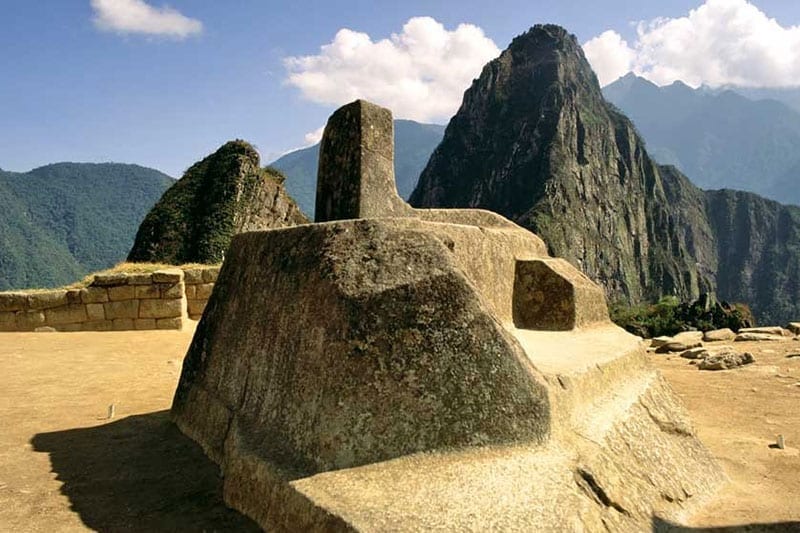
Intihuatana is included in your Machu Picchu ticket since it is part of the complex, so no “extra” permit is necessary.
It is one of the major locations within Machu Picchu and is part of our Machu Picchu travel guided tour of the complex.
Just as a side note, there are multiple versions of the Machu Picchu entrance permit. Most new travelers will usually choose the “Machu Picchu solo” or “only Machu Picchu” permit when given the option.
This is usually a mistake on the travelers’ behalf. It is best to choose the Machu Picchu ticket with the option to hike one of the additional treks of Huayna Picchu or Mount Machu Picchu.
Remember that this is a once-in-a-lifetime trip to Machu Picchu, and you will want to get all the hikes that you can.
That photograph of Machu Picchu from up top you see in so many professional level pictures will be taken from either the peaks of Huayna Picchu or Mount Machu Picchu, so if you have the time and energy we recommend you pick one. All permits include access to the Machu Picchu sundial, Intihuatana.
Adding to the side note, there is a large influx of travelers visiting Intihuatana at all times. Due to this, the Machu Picchu sundial has strict visitation times from 7:00 am to 10:00 am, and there are no visitations outside of that schedule.
If you have the option, try to get the morning shifts when you visit Machu Picchu.
The Sundial in Pisac
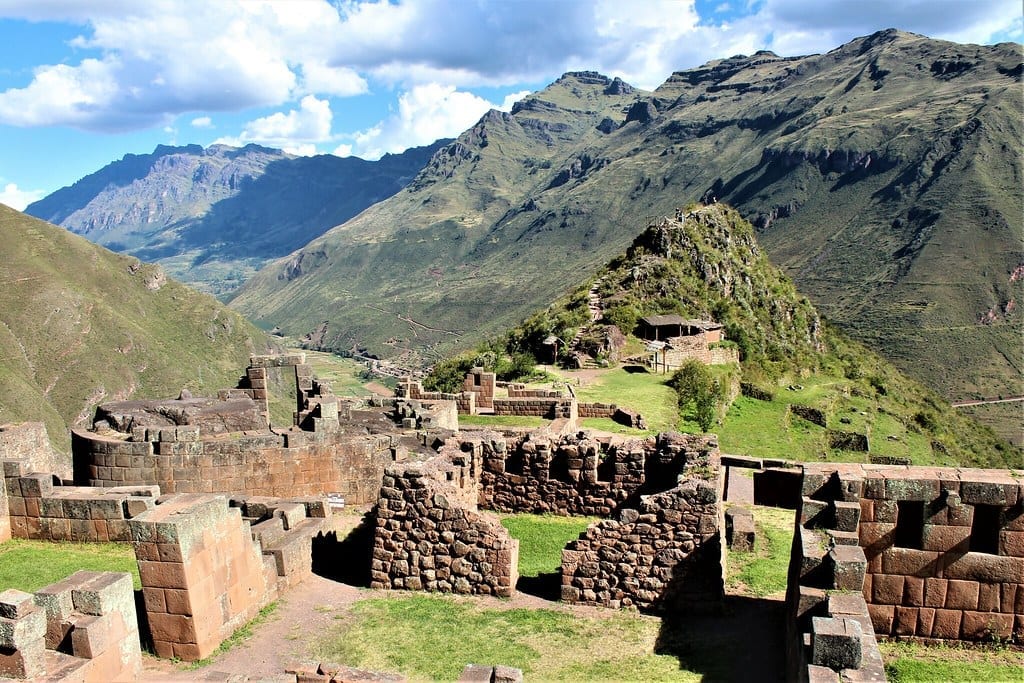
About an hour outside Pisac (near Cusco), there is another very important Intihuatana, The Intihuatana in Pisa. This rectangular-shaped monolith, carved into stone, is located on a hill in Pisac.
The shape and general structure are very similar to those of the Intihuatna in Machu Picchu. The sundial in Pisac is also considered a temple of the sun and is supposed to have been just as important to the Inca as the one in the stone city.
Additional Information on Intihuatana
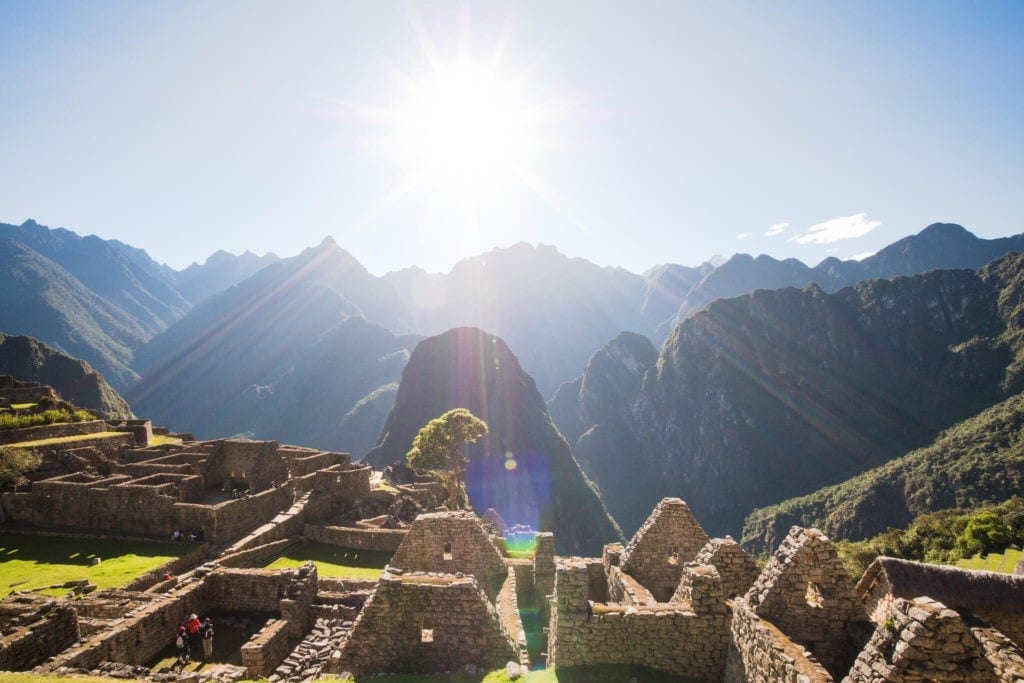
The Intihuatana, Machu Picchu sundial, is considered one of the most essential and popular locations within the Machu Picchu structure.
Remember that you can also visit the Intipunku (Sungate), the temple of the three windows, the temple of the Condor, and several other sites with our guided tour. These are also included in the 4-day Inca trail to Machu Picchu.
In the past, touching the Intihuatana temple was allowed; now, due to the number of travelers who visit Machu Picchu (as well as some rather rowdy tourists), touching the structure is no longer permitted.
Now, travelers can get close to the monolith, but it will remain just out of reach. Because too many visitors were in the Intihuatana temple at any given time, the visiting schedule was reduced from 7:00 am to 4:00 pm. Local authorities argued, “There were just too many travelers at the temple at any given time.”
Frequently Asked Questions About Intihuatana
What is Intihuatana?
It is a monolith, a sundial in Machu Picchu used for ceremonial purposes by the Inca.What was Intihuatana used for?
Intihuatana in Machu Picchu was used for religious ceremonies involving the change in seasons and weather.
Who made Intihuatana?
The Inca made Intihuatana.
What does Intihuatana mean?
“Inti” means the sun in Quechua, and “watana” means to hold or grab.
Was Intihuatana used as a calendar?
Yes. Intihuatana was used by the Incas as a calendar for the different seasons and changes in weather.
Why did the Inca need Intihuatana?
The Inca used Intihuatana to plan when to plant and harvest their crops correctly.
